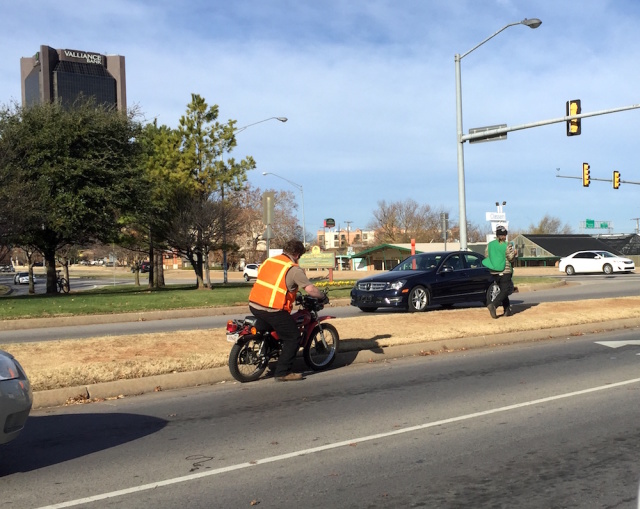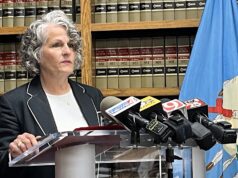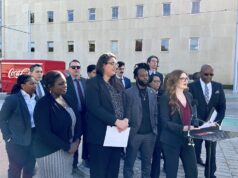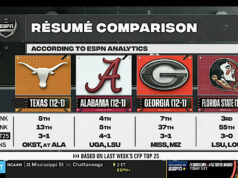
Despite opposition from the Homeless Alliance, the ACLU of Oklahoma and numerous others, Oklahoma City councilors passed a controversial median ordinance 7-2 Tuesday.
In short, the rule will prohibit almost anyone from occupying OKC medians, something opposition leaders viewed as a direct attack on panhandlers.
Supporters, however, called it a public safety issue, despite little to no evidence that occupation of OKC medians has resulted in grave injury.
OKCPD public information office Capt. Paco Balderrama told NonDoc that 11 OKC pedestrians had died in 2015 as of September, but records don’t indicate whether any were in medians.
“The state accident form does not specify if the victim was on the median or in the act of panhandling, and we do not track that particular category,” he said.
The ACLU of Oklahoma, meanwhile, has already called the ordinance unconstitutiona
Regardless, here at NonDoc, we wondered what other unregulated issues might actually pose bigger public safety concerns.
Lack of health insurance
In 2012, nonprofit consumer advocacy group Families USA reported a death rate of about three-per-hour for uninsured Americans. A Reuters story on the topic states:
U.S. Census data show that 50 million Americans lack coverage, and experts say those in such straits forego medical care, doctor visits and preventive tests including cancer and blood pressure screenings.
According to data from the U.S. Census Bureau, about 15 percent of Oklahomans lacked health care in 2014, which represents a decline from 2013. Only Florida, Georgia, Alaska and Texas have greater percentages of uninsured residents.
Like all states, Oklahoma has had a chance to reduce the risk of death by lack of health insurance, but emails show that Gov. Mary Fallin relied on advice from conservative groups and political pressures in rejecting an expansion of the state’s Medicaid coverage. Accepting and funding the expansion would provide health insurance for between 100,000 and 200,000 Oklahomans.
Failure to wear a helmet while riding a motorcycle
According to Title 47, Section 12-609 of state law, only motorcyclists under the age of 18 are required to wear a helmet while riding. In a 1968 opinion by the Oklahoma attorney general, the mandatory wearing of a motorcycle helmet was deemed unconstitutional, “since it had no relationship to general public health, safety and welfare.”
According to OU Health Sciences Center data from 2009 to 2010, non-helmeted accident victims died at a rate of 11 percent after arriving at the hospital, compared to only 7 percent of helmeted operators.
While motorcyclists assert freedom of choice when it comes to helmet use, the data tend to indicate freedom from life should helmets be eschewed.
Meanwhile, there were 55 fatalities out of 1,465 total motorcycle crashes in Oklahoma during 2014. Twelve of those fatalities included the motorcycle operator wearing a helmet, while 35 fatalities list helmets as not in use. In eight cases, helmet use remains unknown.
In 2014, there were 129,404 motorcycles registered in Oklahoma. Of those, 1,239 were involved in crashes resulting in either injury or death. So, that’s about a 1 percent chance a motorcyclists will be involved in an accident resulting in either injury or death.
Living where suspected terrorists can still buy assault rifles
According to GunLawsScorecard.org, an offshoot of the Law Center to Prevent Gun Violence, “Every year, more than 30,000 Americans die from gun violence.” Within that context, Oklahoma ranks 8th in the nation with regard to gun deaths.
On Monday, Oklahoma City Police Chief Bill Citty even told NonDoc readers that, “Regrettably, federal and state laws do not provide enough regulation of firearms that would benefit law enforcement with the tools to combat much of the violent crime associated with the easy access.”
But as recently as 2014, Gov. Mary Fallin and the Legislature strengthened self-defense laws in Oklahoma, extending the permissible use of deadly force to include anyone, not just family members, as was previously the case. That’s part of why Guns and Ammo ranked Oklahoma the 30th best state for gun owners in the country during summer 2015.
While Okies may fall on the “worse” half of rankings in that list, GunLawsScorecard.org ranks the Sooner State an F owning to various failures.
Among other things, the report states that Oklahoma does not:
- Require a background check prior to the transfer of a firearm between unlicensed parties;
- Require firearms dealers to obtain a state license;
- Prohibit the transfer or possession of assault weapons, 50 caliber rifles, or large capacity ammunition magazines;
- Require gun owners to obtain a license, register their firearms, or report lost or stolen firearms;
- Limit the number of firearms that may be purchased at one time;
- Impose a waiting period on firearm purchases;
Regulate unsafe handguns (“junk guns” or “Saturday night specials”); - Significantly regulate ammunition;
- Allow local governments to regulate firearms; or
- Give local law enforcement discretion to deny a handgun license for either concealed or open carry.
For a clear picture on how gun control, states colored orange on this map from OpenSocietyFoundations.org are said to have gun control laws that actually undermine federal minimums.
 Loading...
Loading...
Beyond that, a push last week to allow for the prohibition of certain gun sales to suspected terrorists on certain government watch lists — like the no-fly list — failed in Congress.
High school football
“So far, this high school football season, at least three players have been airlifted from the field. One young man didn’t survive.”
That’s the opening from a Nov. 16 News9 story about this season’s “String Of Recent High School Football Injuries.”
Nationwide, 19 students have died as a result of injuries sustained while playing football, according to a Dec. 1 story from NPR, which actually represents a decline over time:
Back in the 1960s, around 30 or 40 players died each year. Then came a steep decline thanks to new safety measures: a standardized helmet that must be certified for use in a game; a rule banning headfirst tackling; and improvements in athletic medical care. But instead of dropping to nil, the number of football-related fatalities leveled off in the 1990s. Since then, a persistent average of about four or five football players have died each year as a direct result of playing their sport, along with an average of 10 or so indirect fatalities.
According to research from the American Academy of Pediatrics, “Football has the highest concussion rate of any high school sport, and players who suffer the injury can suffer cognitive problems that last even after their acute symptoms have eased.”
In conclusion …
It’s not particularly hard to come up with a list of four things that are currently more dangerous than standing in an OKC median. While some of these things need to be addressed at the state and federal level, OKC councilors have many options if they truly want to promote discussion about “public safety.”





















